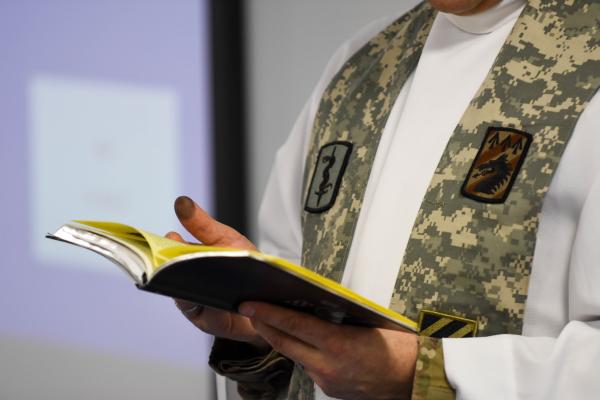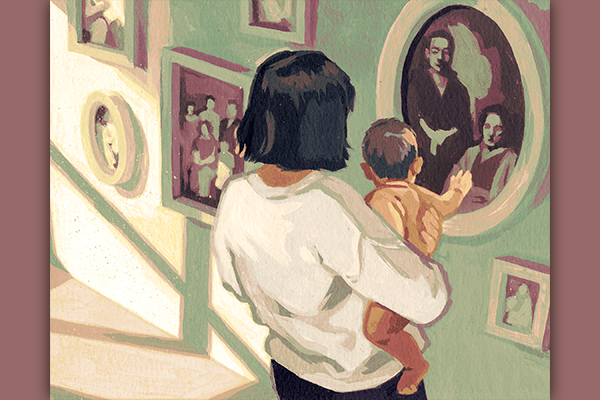In June, Commonweal magazine, the oldest independent lay Catholic publication in the U.S., published an essay by Catholic intellectual Peter Steinfels. His essay, “The War Against Just War,” compares the current conversation on Catholic nonviolence to French idealists in Nazi-occupied France — who ended up collaborating, through their well-intentioned naiveté, with Hitler’s forces.
Ouch! Welcome to Nonviolent Fight Club: Where big ideas get fought out with velvet gloves.
Last month, Commonweal published Letters to the Editor responding to Steinfels essay — and they were hot. Michael Gallagher wrote, “Nuclear deterrence is the third rail that neither proponents of the just-war theory nor those who insist on ‘Gospel nonviolence’ want to confront.”
And Thomas Hughson took on what he calls “a Catholic absolutism in peacemaking that will not foster dialogue with those convinced that just-war norms remain crucial restraints on national use of force in legitimate defensive warfare.”
Why Nonviolence?
If you’re new to this most recent round on Catholicism and nonviolence, here’s a little background: Back in April 2016, a group of Catholics gathered in Rome to rethink what the Catholic Church should teach about peace and war, about pacifism, just war, and Christian nonviolence.
This is the first time the Vatican has ever co-sponsored a conversation on nonviolence.
I attended the meeting and wrote about it for the December 2016 issue of Sojourners. (I’m also now leading global roundtable conversation on Catholic nonviolent action that came out of the Rome conference.) The conference issued a statement calling for the Catholic Church “to recommit to the centrality of gospel nonviolence” and to begin exploring as a church what it would mean to “no longer use or teach ‘just war theory.’”
It was then that holy hell broke loose, launching what I call "Nonviolent Fight Club.” Theologian activist pugilists began popping up around Catholic media sites defending “just war theory.”
Catholic social ethicists Mark J. Allman and Tobias Winright portrayed the Rome conference as advocating for “the church to embrace pacifism.” Lisa Sowle Cahill, a leading Catholic ethicist who attended the conference in Rome, replied that “‘just peace,’ not just war, should be the distinguishing mark and calling” of the Catholic Church.
“Just peace would involve conflict-transforming practices such as direct nonviolent action, diplomatic initiatives, interreligious political organization in civil society, unarmed civilian peacekeeping, public rituals of repentance, and initiatives of reconciliation,” she wrote.
Then in October, Marie Dennis, convener of the Rome conference and co-president of Pax Christi International, and Eli McCarthy, author of Becoming Nonviolent Peacemakers, rolled into the ring: “Stop talking about the possibility of a ‘just war,’” they wrote, and start emphasizing nonviolent ways to deal with real-life challenges, such as atrocity situations, and pushing for a new moral framework for just peace.
By May 2017, Commonweal published a weary Gerald Schlabach (“Just War? Enough Already”), supporting issues raised at the 2016 Nonviolence and Just Peace Conference on what the Catholic Church should teach about peace and war.
Nonviolence v. Idealism
Which brings us back to Steinfels' essay in Commonweal’s June 2017 issue. Boiled down, his critiques are these (I paraphrase):
1. Catholic teaching on “just war” principles and pacifism are already well-developed. Pacifists, a valued and difficult calling, should focus on making theological cases for pacifism, to keep the church honest. “Just war” teaching is for everybody else, who must be about the practical work of combating very real evil in the world. Both pacifism and “just war” teaching should work toward a swift and stable peace.
2. The codependent relationship of these two in Catholic teaching should not be unsettled, and it is naive to question this balance.
Steinfels, quite rightly, fears the dangers of naive idealism. Any war survivor, armed or unarmed, will concur. But advocating for nonviolence is not naive, nor is it idealistic.
Steinfels did not attend the Rome conference, and, as far as I can tell, did not interview any of the principal organizers for his critique. His argument suffers because of it, and his reliance on news headlines and ancillary materials to criticize conference themes leaves him on expending energy on an argument that has already moved on.
Questions on what the church should teach about peace and war are not new — and it is not naive to push for better answers. These questions are raised with great frequency, and have been by laity and popes alike since Vatican II. What the April 2016 conference did was finally bring voices of grassroots peacemakers with experience in war into this unfolding prayerful deliberation.
As Gerald Schlabach wrote in his essay shortly preceding Steinfels’, “The April 2016 conference … represented a deepening discourse about a shift already long underway. …The authority of its call to move from ‘just war’ to ‘just peace’ was the moral authority of grassroots peacebuilders from conflict zones around the world. But those two kinds of authority are now deeply and more publicly involved in a conversation.”
In the months since the conference, Pope Francis has further engaged the conversation on what the church should teach on peace and war. In his World Day of Peace 2017 message, the pope wrote:
To be true followers of Jesus today also includes embracing his teaching about nonviolence. Nonviolence is sometimes taken to mean surrender, lack of involvement and passivity, but this is not the case. … [Nonviolence] requires the willingness to confront conflict head on, resolve it and to make it a chain in a new process.
The logical response to the pope’s appeal is not to dismiss peacemaking as naive — rather, it's to develop a robust and coherent teaching on nonviolence and “just peace,” setting it in the context of Scripture and tradition.
Peacemaking as 'Empirical Undertaking'
To that end, there are five valuable contributions Steinfels makes to this flourishing discourse. He writes:
1. “There is no prima facie contradiction between (a) recognizing that a circumstance may possibly arise in which nonviolence no longer serves peace and justice unless supplemented by lethal force and (b) a determination to strengthen whatever nonviolent attitudes, practices, and institutions might possibly prevent such a circumstance from arising.” Here I agree with Steinfels, as far as it goes. We can move in the direction of a robust theology and practice of nonviolence within the Church. We can make nonviolence our forward position, and bolster our moral and spiritual imagination as well as the increasingly sophisticated practices in nonviolent response to violent conflict.
2. “Pacifism is not necessarily peacemaking. It may be—and sometimes has been—or it may not be. Peacemaking is an empirical undertaking.” True again. We need clarification of terms as well as context for terms within the church. “Pacifism” may be a special charism given to some within the church, such as celibacy is, or it may be an inward manifestation of an outward practice or virtue that is available to all. Nonviolence and peacemaking, however, are outward signs and are constituent to the Christian life. These are empirical undertakings that can be measured, improved, and contextually replicated, but are empowered by an inward attitude.
3. “Illusion and self-deception did not, and do not, serve peacemaking.” I would add, neither do they serve warmaking.
4. “Language matters. Every serious exponent of just-war teachings regrets that the very phrase can be misunderstood and abused — and has been.” I would add that this is also true when the language of “peacekeeping” either disguises the use of armed force, or when pacifism is confused with passivity.
5. “Press everyone to the work of just peacemaking … Welcome them all to explore and embrace the widest possible use of nonviolent means to prevent, halt, and heal armed conflicts.” And here, Steinfels describes precisely where the conversation sparked by the Rome Conference has gone — and beyond it, as well.
For example, last year Catholic Charities of Baltimore teamed up with Cure Violence’s Safe Streets initiative to reduce violent behavior through data-driven disease control methods.
And this year, Cardinal Cupic launched an extensive anti-violence program in Chicago, the third largest diocese in the nation, including a philanthropic arm to fund other nonviolence initiatives throughout the Chicago area. Pope Francis sent a letter of support, encouraging more diocese to do the same. “The consistent practice of nonviolence has broken barriers, bound wounds, healed nations — and it can heal Chicago,” he wrote.
Beneath the surface of Steinfels’ angst is the question of whether the language and practice of nonviolence can develop in such a way as to be intelligible or valuable to those who hold political power.
Terrence Rynne, theologian and founder of the Marquette University’s Center for Peacemaking, expressed concern over this tendency to cast "just peace" language as flimsy or impractical. He wrote: “I have a sense that the public Catholic intellectuals who cling to the importance of the just war theory see themselves as modern day Reinhold Niebuhrs or John Courtney Murrays ... they seem to see themselves as tribunes of political power. If they embrace gospel nonviolence … they lose out on their ability to enter the halls of political power with a message that influences the commonweal.”
The work of the Catholic Nonviolence Initiative, born from the April 2016 Rome meeting, recognizes that most of the people with political power are not the victims of social violence. CNI is bringing the voice of grassroots Catholics in the majority of the world — who are the primary victims of social violence and war — into the ring.
Remember, the seventh rule of Nonviolent Fight Club is that fights will go on as long as they have to.
Got something to say about what you're reading? We value your feedback!






